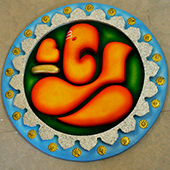Design Resource
Thermocol Modeling - Ahmednagar, Maharashtra
Modeling Works
by
Prof. Bibhudutta Baraland Srikanth B
Thermocol is the commercial name for the polymer product Polystyrene, synthesized from the monomer styrene. Polystyrene comes in two forms brittle solid or foamy. This inexpensive resin with 90- 95% of air is a type of plastic that comes with a high thermal insulation rate. Hence it is often used for concrete forms and insulation panels, that are used in structural insulations. The scale of thermocol production in our country is several million tons per year.
Polystyrene was discovered by Eduard Simon in 1839, a Berlin-based chemist who accidentally discovered a monomer from the resin of an American sweetgum tree Liquidambar styraciflua, and named it styrol. After several days, it turned into styol oxide, a thick jelly-like substance which he presumed to be due to oxidation. But by 1845, Jamaican druggist John Buddle Blyth and German chemist August Wilhelm von Hofmann proved that the new form has nothing to do with oxygen play. In 1866, Marcelin Berthelot identified the role of the polymerization process in the formation of Styroloxyd, which had practical application only after 80 years. When german organic chemist Hermann Staudinger illustrated a chain reaction when styrol is heated, he gave Styoloxide, which he changed to the present name, Polystyrene. Later in those days, it was used as a replacement for die-cast zinc, and the real successful application struck when a reactor vessel newly discovered gave pellet-shaped Polystyrene. The origin of its commercial name ‘Thermocol’ was a gift of a Mumbai-based manufacturer Mr. K.K Nag who, in partnership with German Rudy Arthur Coal, reversed the engineered process and synthesized a patterned Polystyrene, which was named after his partner. Now, this product has wide applications and is in great demand in the market.
Carving is the act of shaping materials by scraping off certain portions, using a range of tools that possess individual properties. Carving being done on any solid material that holds the chiseled shape is mainly used to make sculptures. Malleable materials like clay, wood, thermocol, melted glass, etc., have broad applications for this purpose. Mr. Laxman Sadupatla, a well known Thermocol sculpture artist from the Ahmednagar part of Maharashtra, is renowned for his thermocol sculpture works which are in the market for 20 long years. He gives credit to his team and his imagination and presentation skills for the dedicated creation of these handmade sculptures. The state government has honored him with several awards for his excellence in this area of art.



